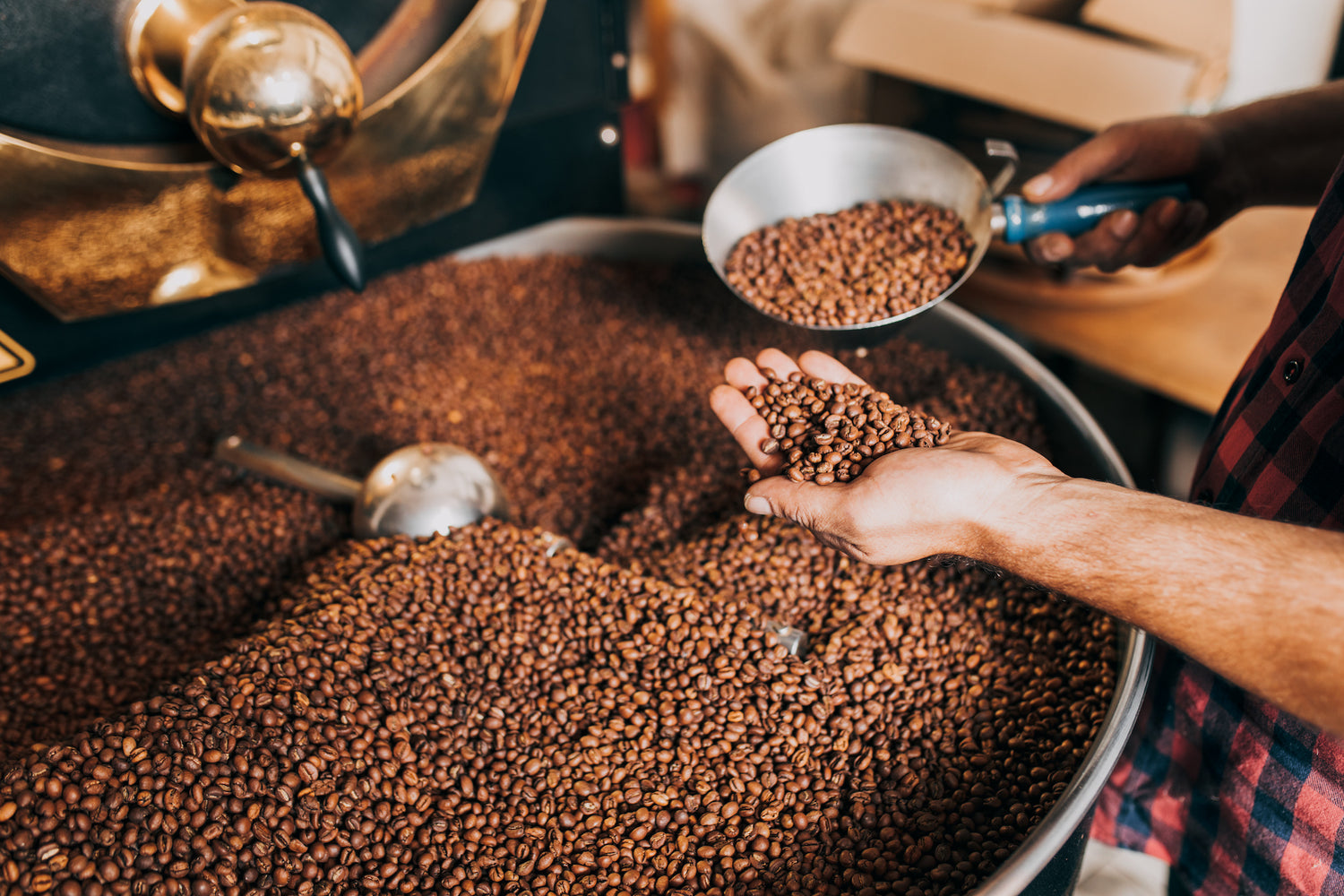
COFFEE 101
The exciting part of being a coffee roaster, other than drinking great coffee every day, are the endless opportunities that exist with the vast number of coffee origins from around the world and the effect of roasting profile variables. Below is some brief, general information about coffee, from the field to your cup…
The Coffee Bean
The coffee bean is a seed from a small fruit that is commonly referred to as a “coffee cherry” and requires a specific set of growing conditions, such as climate and soil. As such, coffee can not be grown just anywhere. Altitude also plays a part in the density of the bean and influences certain characteristics.
SHB or Strictly Hard Bean refers to coffees grown at altitudes of 1200 meters or higher where the coffee fruit matures at a slower rate, allowing more nutrients to be absorbed and results in a denser, sweeter coffee bean.
Natural and Washed Processing Methods:
In a natural processed coffee, the cherry is picked and immediately set out in the sun to dry for several weeks and requires regular rotation of the cherry to slow fermentation. Once the cherry is dry the bean and outer skin, or pulp, is separated. The bean is milled to remove and remaining pulp. This process produces a generally sweeter coffee that is also complex, smooth and chocolatey.
In a washed processed coffee, the cherry is picked and the outer skin, or pulp, is removed which leaves a sticky, sugary layer on the bean. The bean is then fermented in water for a couple of days which releases the sugars and then dried, either in the sun or mechanically. This process produces a generally brighter, fruity, acidic and clean coffee.
Roasting Levels:
Roasting is accomplished by the application of time and heat on the green coffee beans. The beans go through 3 distinct phases which are influenced and manipulated by the time and heat variables. As the roast progresses from lighter to darker the flavor nuances change and can be described in general by the following …
Light – Inherent flavors of origin are most present, is more acidic and brighter. May have “grassy” or “earthy” flavors.
Medium – Origin flavors still present, becomes sweeter. Balanced flavor, aroma and
acidity. Roasting flavors start to emerge.
Medium Dark – Origin flavors are muted and becomes more bittersweet. Acidity disappears with flavor, aroma and a fuller body emerging.
Dark – Roasting flavors are now dominant as origin flavors are largely gone. Full body and bold taste. More bittersweet than lighter roasts.
Brewing:
The preferred method of preparation would be to grind the coffee beans just prior to brewing and use filtered water to preserve the maximum flavor and aroma. Grind size will depend on preference and brewing method, but generally speaking the following is a good rule of thumb:
Fine
(think powdered sugar) – Espresso
Medium Fine
(think table salt) – Moka Pot, Cone Shaped Pour Over
Medium
(think regular sand) – Drip Coffee Maker, Aeropress (note that Aeropress can
use multiple grind sizes from fine up)
Medium Coarse
(think coarse or rough sand) – Chemex, Flat bottom Pour Over
Coarse
(think Kosher sea salt) – French Press, Percolator
Extra Coarse
(think cracked peppercorn) - Cold Brew
Strength of the coffee can be measured from the trusty old 2 teaspoons per 6 oz cup and then tailored to your desired taste. If you are the more technical type then investing in a small gram scale and weighing your coffee will give you more consistent, repeatable results.

Our Coffee
While our coffee can be enjoyed for several months following roast date, we believe it is best consumed within 4-6 weeks to maintain the peak flavors and aromas of a specialty coffee.
Whole bean coffee maintains the maximum flavors and aromas but we are happy to grind your order upon request.
Store in a dark, temperature stable place (such as a pantry). Feel free to freeze but we prefer to have you purchase as needed to consume within 30 days so that won’t be necessary.

